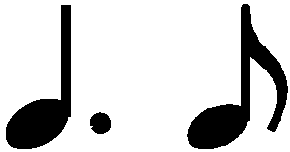



Issues : Dotted rhythms and triplets
- « Previous
- 1
- 2
- 3
- Next »
|
b. 49
|
composition: Op. 27 No 1, Nocturne in C# minor
..
In bar 49 in GE (→FE→EE) the semiquaver of the double dotted rhythm in the right hand part was moved beyond the third note of the second triplet in the accompaniment. This inauthentic notation, misleading for the performer, was also used in bars 37-42 and 44-45.
See the chapter devoted to that topic in: Jan Ekier, Introduction to the National Edition, Editorial Issues.
category imprint: Interpretations within context; Differences between sources issues: GE revisions , Dotted rhythms and triplets |
|||||
|
b. 50
|
composition: Op. 27 No 1, Nocturne in C# minor
..
In GE (→FE) notes of the R.H. rhythm category imprint: Interpretations within context; Differences between sources |
|||||
|
b. 51
|
composition: Op. 27 No 1, Nocturne in C# minor
..
In bar 51 of GE (→FE→EE) the semiquaver in category imprint: Interpretations within context issues: GE revisions , Dotted rhythms and triplets |
|||||
|
b. 51
|
composition: Op. 27 No 1, Nocturne in C# minor
..
In GE (→FE) notes of the R.H. rhythm category imprint: Interpretations within context; Differences between sources issues: EE revisions , GE revisions , Dotted rhythms and triplets |
|||||
|
b. 53-62
|
composition: Op. 27 No 1, Nocturne in C# minor
..
In GE (→FE) in bars 53-62, similarly to GE in bars 29-36, notes of the R.H. rhythm category imprint: Interpretations within context; Differences between sources |
- « Previous
- 1
- 2
- 3
- Next »





 are distributed in such a way that the quaver is aligned with the 6th L.H. note. In the editors' opinion, this probably does not reflect the notation of [A], and has no impact on the performance. In the main text, we apply the regular rhythmic notation, so did
are distributed in such a way that the quaver is aligned with the 6th L.H. note. In the editors' opinion, this probably does not reflect the notation of [A], and has no impact on the performance. In the main text, we apply the regular rhythmic notation, so did 

 was moved beyond the 3rd note of the triplet in the accompaniment. This inauthentic, misleading notation was used throughout the Nocturne.
was moved beyond the 3rd note of the triplet in the accompaniment. This inauthentic, misleading notation was used throughout the Nocturne.


